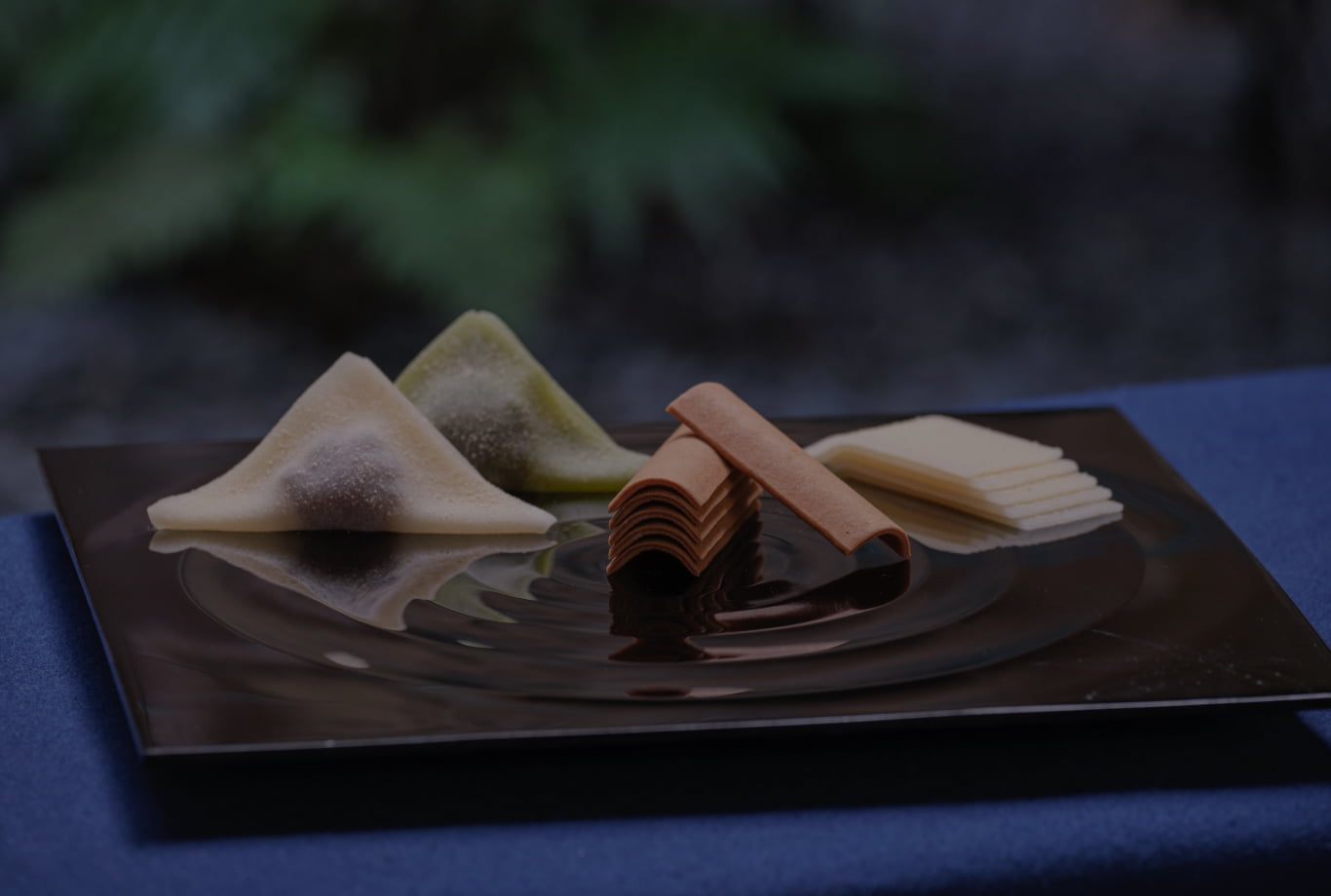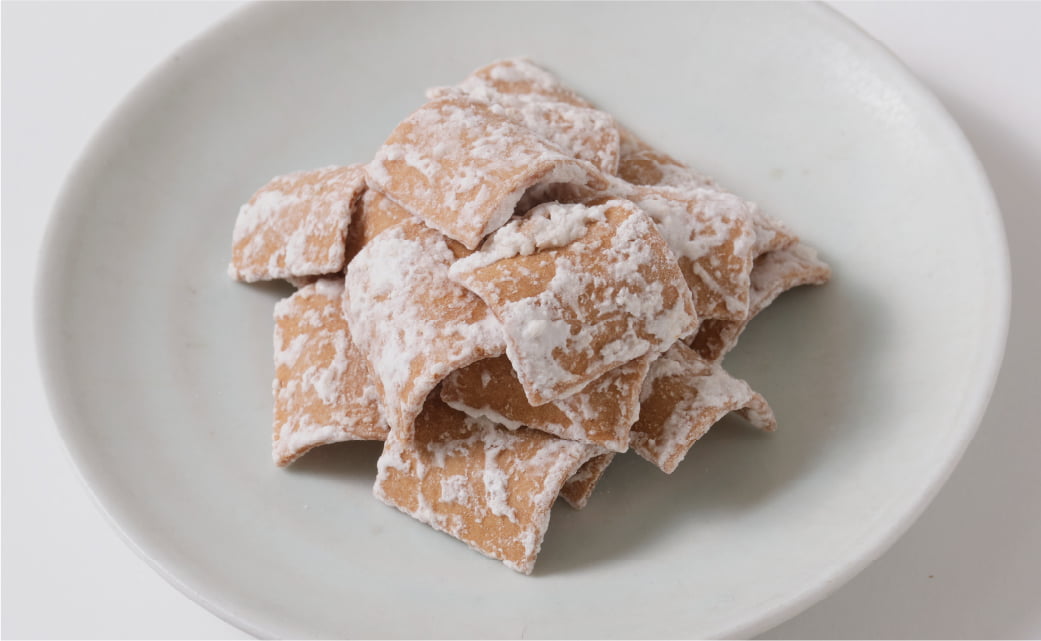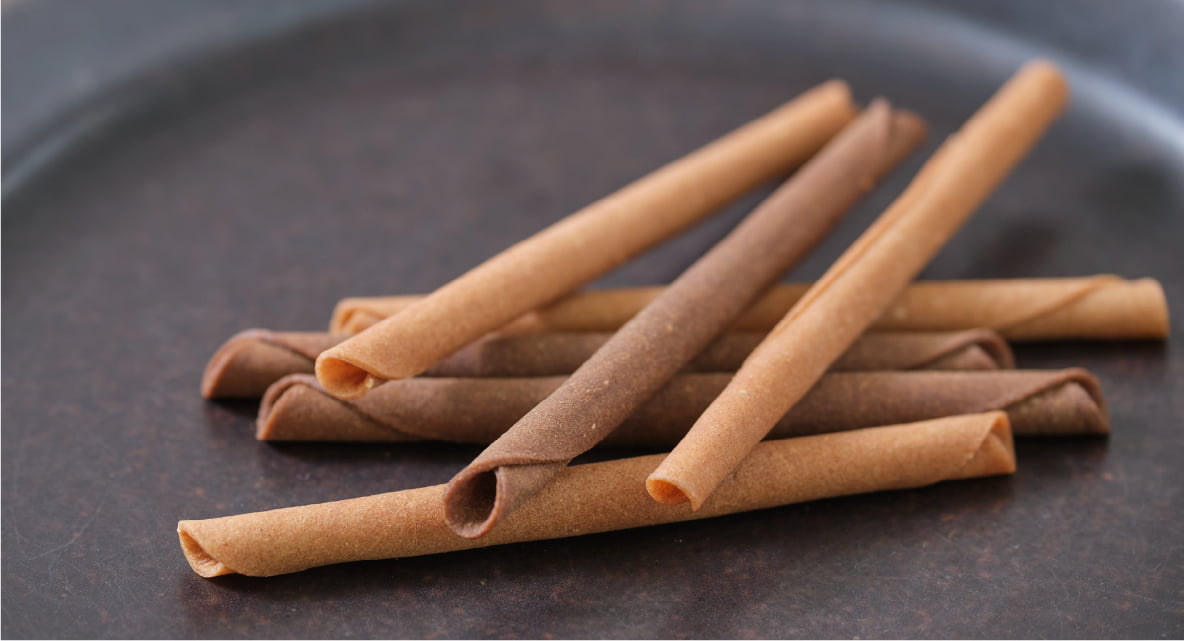Shogoin Yatsuhashi

The origin of Yatsuhashi, baked sweets shaped like the koto (Japanese musical instrument).
In the Edo period, there was a great player of Koto, Kengyo Yatsuhashi. He was both a player and a composer, so still now, many of his pieces are well-known. He passed away in 1685, and his grave was built in the Shogoin Area. Many people loved him so they gathered to pray for him. For those people original Yatsuhashi was served at the teahouse in the Shogoin area. This is exactly the same place as our current flag shop. Our ancestors baked koto-shaped sweets to recall the great composer. Since then, Yatsuhashi have been one of the most famous souvenirs of Kyoto.
Hijiri
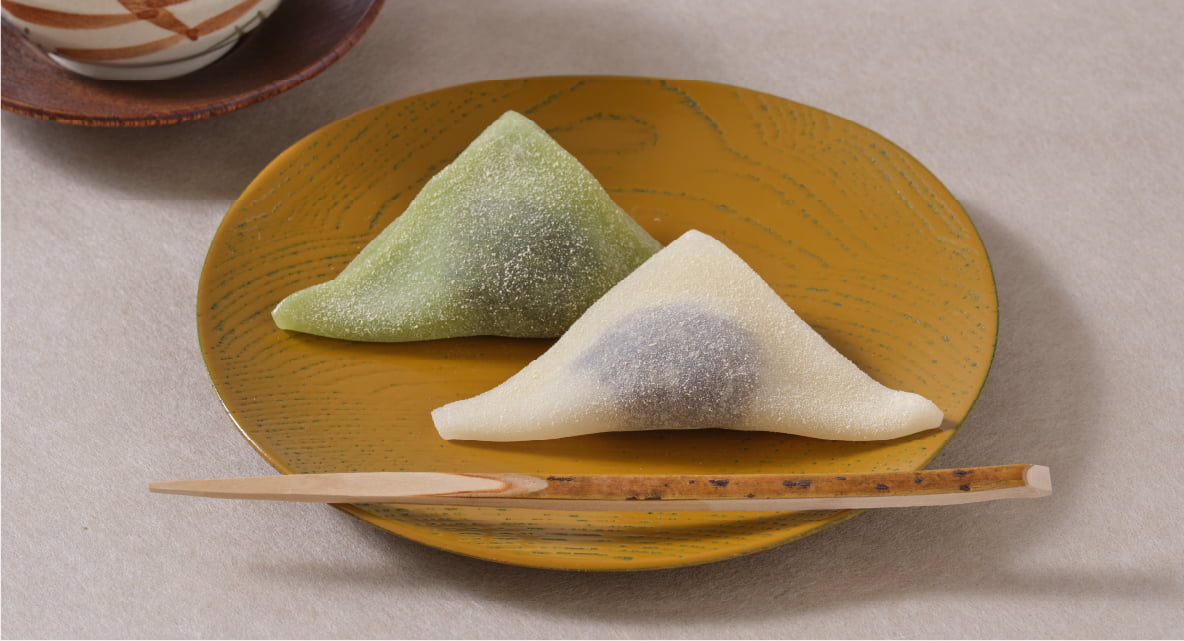
Hijiri, Nama Yatsuhashi with sweet bean paste.
Nama-yatsuhashi are loved by local people, so in 1960, at the annual tea party on July 16th, the great tea master who held the party suggested serving Nama Yatsuhashi with sweet bean paste because he loved sweets. These sweets, called Mikimochi at that time, were very popular there. In 1967, we decided to sell Nama Yatsuhashi with sweet bean paste, and named them “Hijiri” and changed the shape for customers' convenience.
-
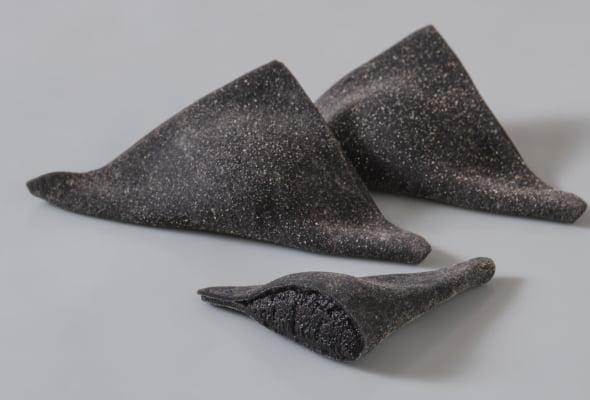
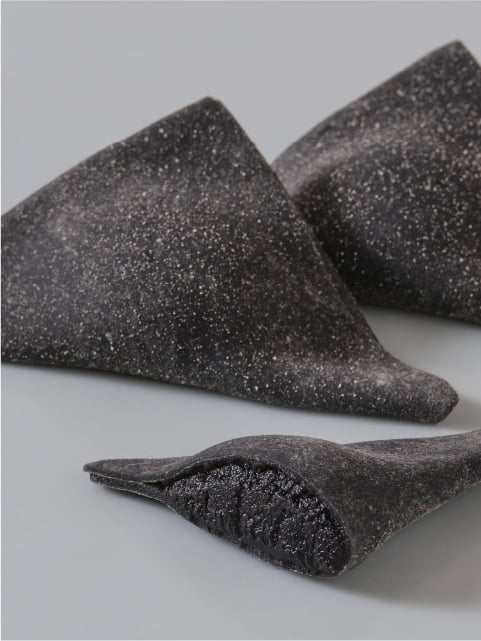
Hijiri - black sesame
-
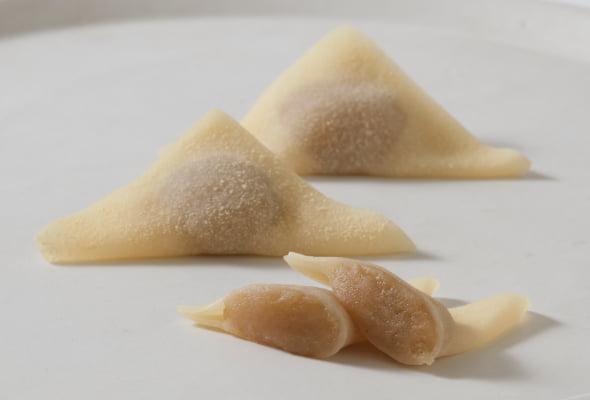
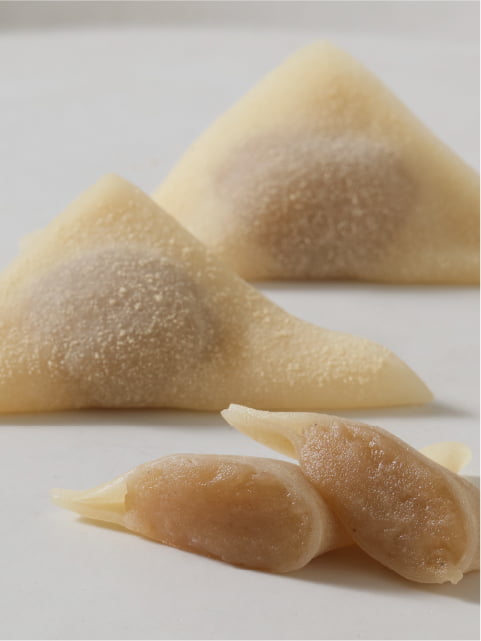
Hijiri - Japanese pepper
*Sales are currently suspended.
-
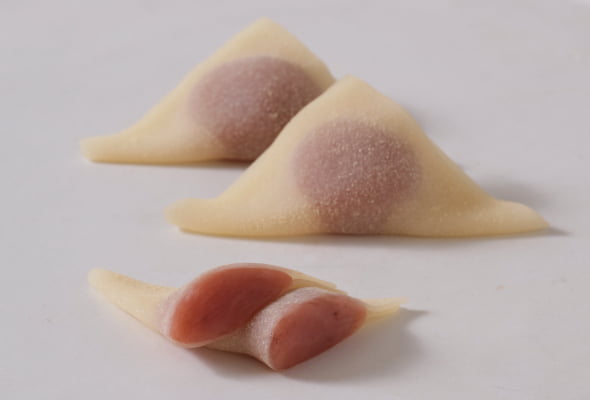
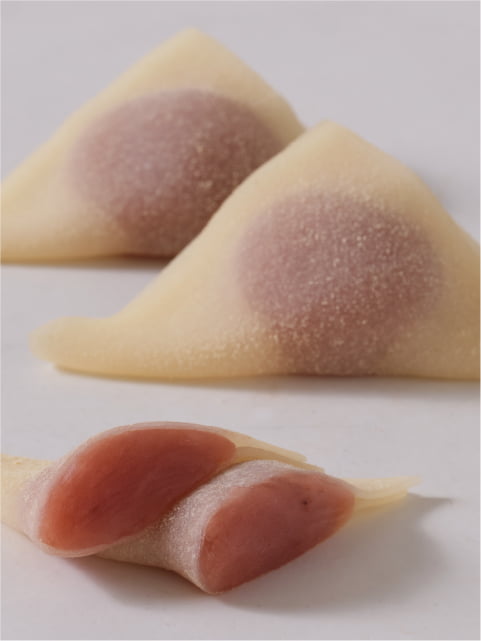
Hijiri - strawberry
-
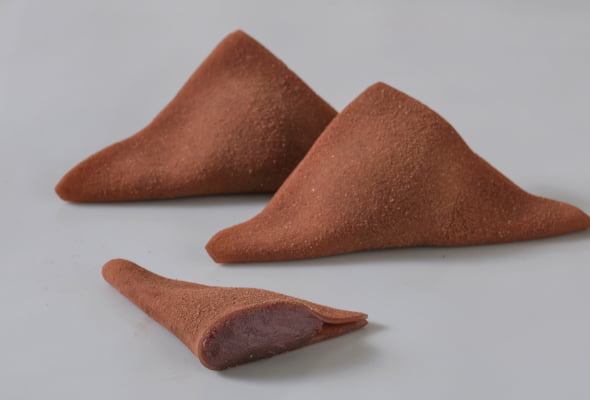
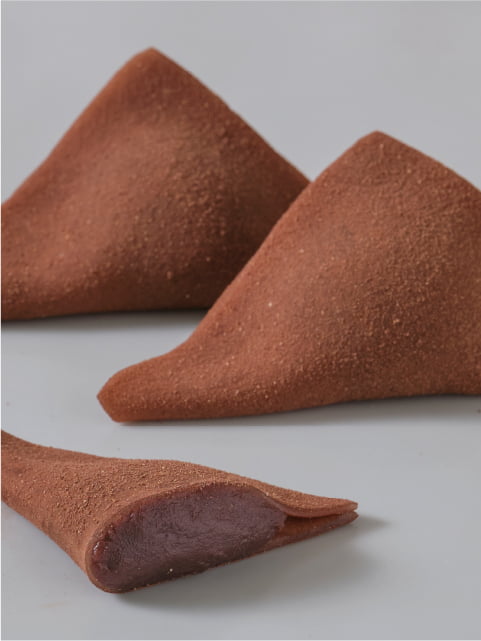
Hijiri - chocolate
Nama-Yatsuhashi

Nama-Yatsuhashi, unbaked sweets.
They have been enjoyed from the late Showa period. It is said that Nama- Yatsuhashi were sold only to neighbors because at that time the transportation and the preservation systems were not developed enough to keep Nama Yatsuhashi fresh for more than a day. "
Kakitsubata
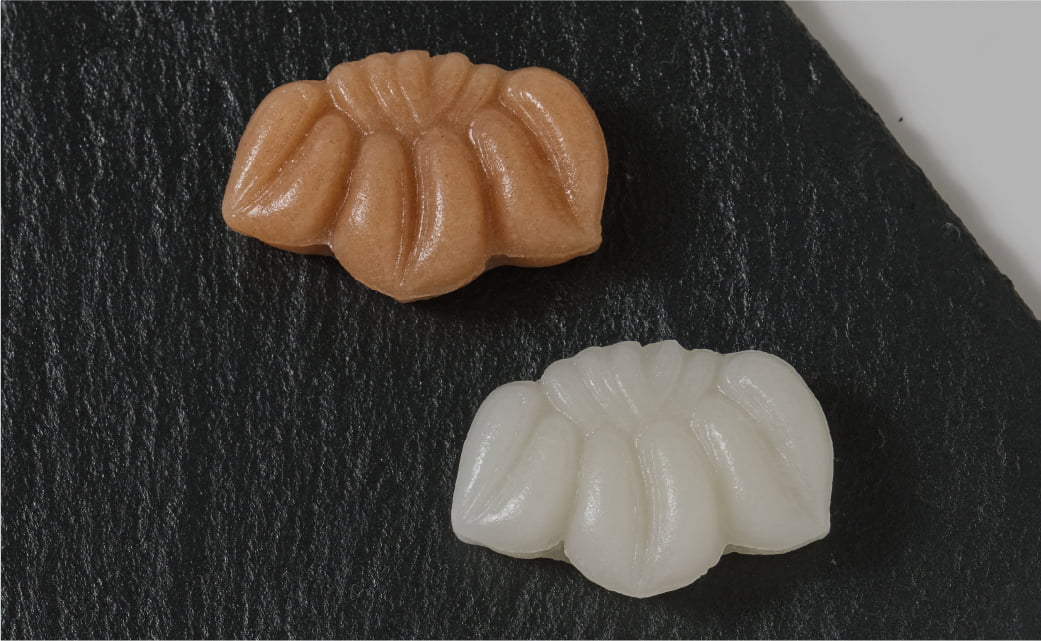
Small Nama-Yatsuhashi cakes in the shape of Japanese Iris.
*Available only at our main store and Kumano branch.
Hanadukushi

Small Nama-Yatsuhashi cakes in seasonal shapes.
*Available only at our main store and Kumano branch.


